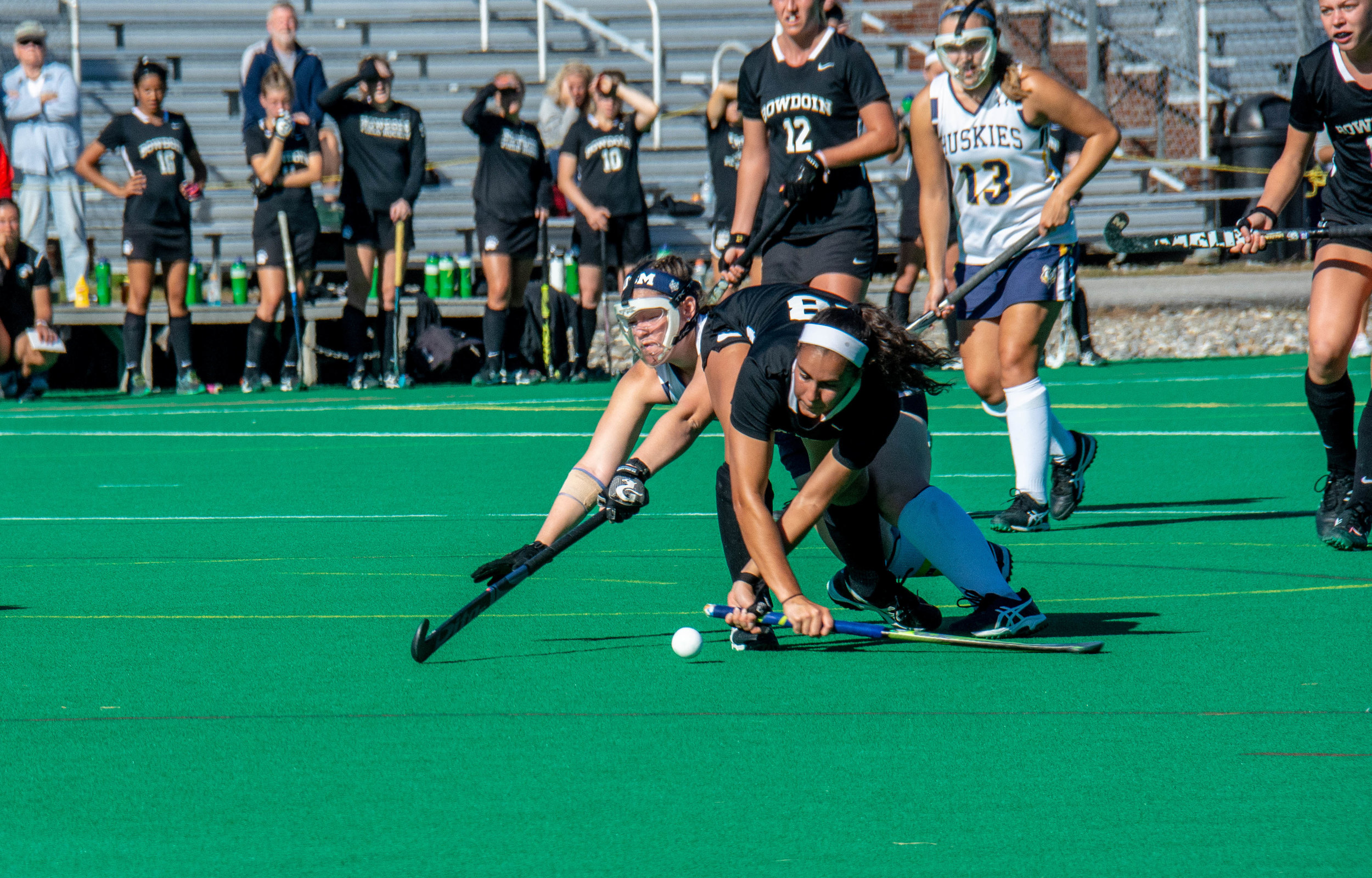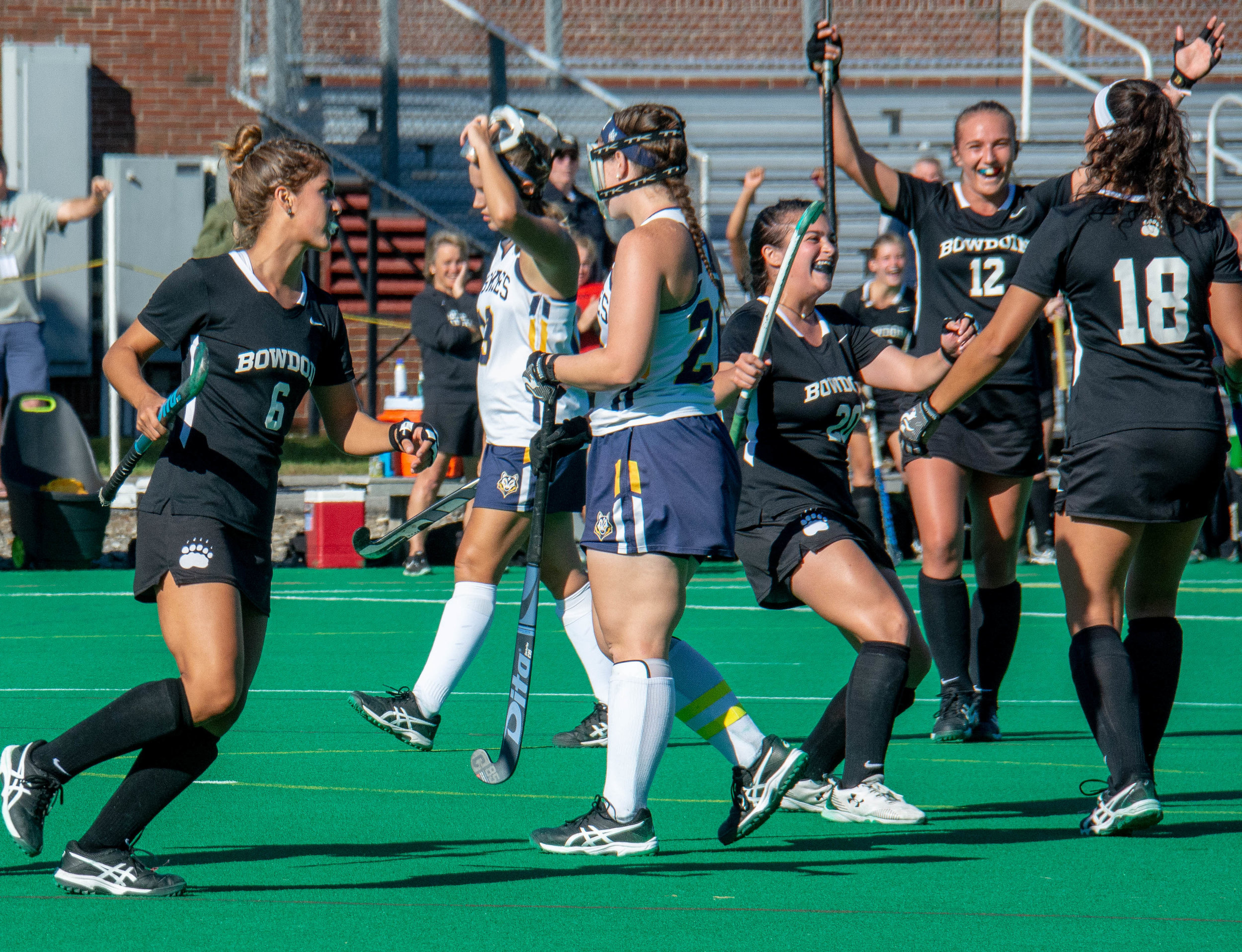My most attentive readers will recall my view that the rules of field hockey can make following the flow of the game difficult for new fans, and present some challenges for the photographer. In the last three weeks, I have had plenty of opportunity to see a lot more field hockey, to ask some questions, and to do some reading. But the best thing I learned came in a flash, an epiphany.
There is no offside in field hockey.
Offsides seems simple enough, especially in ice hockey where a big, foot-wide, blue line painted on the white ice should help. But I know one hockey player who spent three years offsides, his inability to remember the blue line eclipsed only by his willingness to blame the kid carrying the puck for the whistle. I’ve heard soccer coaches—paid coaches on travel teams—berating sixteen year old linesmen because the coach plainly doesn’t understand when a player in a potential offside position should result in a whistle.
So kudos to field hockey: no offsides.
But it is still difficult to photograph. The length of the stick and the requirement that players only play the ball with the flat side (forehand) of the stick lead to some interesting contortions. And a lot of photos of back-sides.
And it never helps when you’re looking through the viewfinder and trying to cheer your team on at the same time. Shooting any sport is easier when the scoring, or who scores doesn’t matter. So this series from a game between Bowdoin College and USM last weekend allowed me to capture the full range of movement required for a player with the ball on her back-hand side to get a shot on goal without sacrificing the time to get in position for a forehand shot.
Time is important because the shot is coming off a penalty corner. You can tell by the crazy Hannibal Lecter mask the USM players are wearing, they only don these during penalty corners because of the heightened possibility of a ball or stick to the face. For a brief time USM will have just four defenders in the shooting area while Bowdoin may have as many as eight offensive players looking for a shot from a set play and as many rebounds as they can hammer on the net before the remaining six defensive players can run back into the action from midfield.
Trying to turn to her forehand will not only kill time, it will also allow the defender—shielded from the ball in the shot here—to take a better defensive position. The shooter is bent more than 90º at the waist with her stick parallel to the ground and almost level with the playing surface. While bending like this she has to retain her balance in order to apply some power to the shot.
And the shot. In the first photo the shooter’s wrists are crossed so that she can get the flat side of the stick to the ball, and take the only legal shot available. A disproportionate amount of the power of this shot will be generated by the shooters arms and wrists as she snaps the stick back into the forehand positions. She knows where the goal is— somewhere over her right shoould—but obviously couldn’t pick a corner.
And the third shot—it’s just a joyous the celebration.


